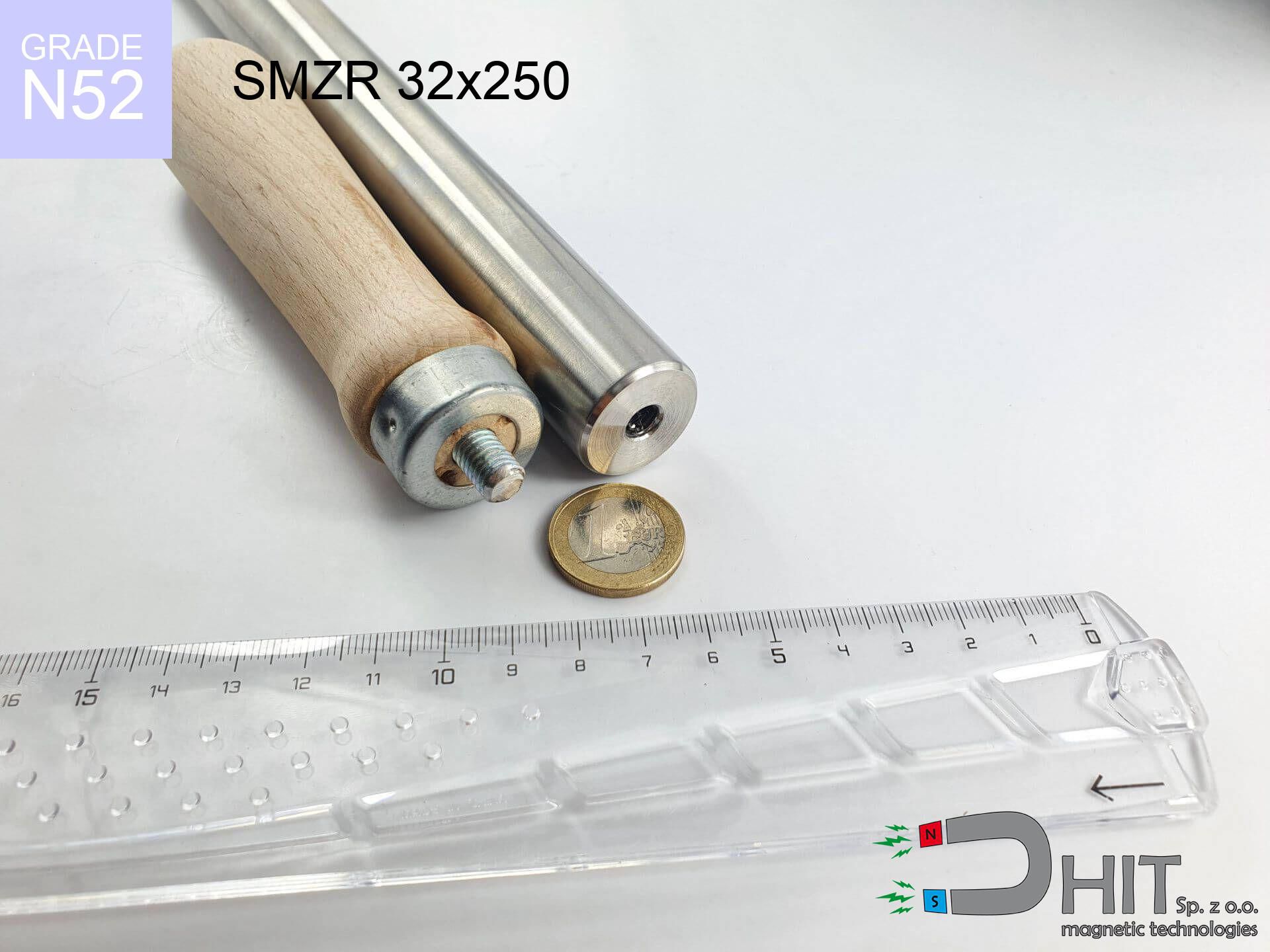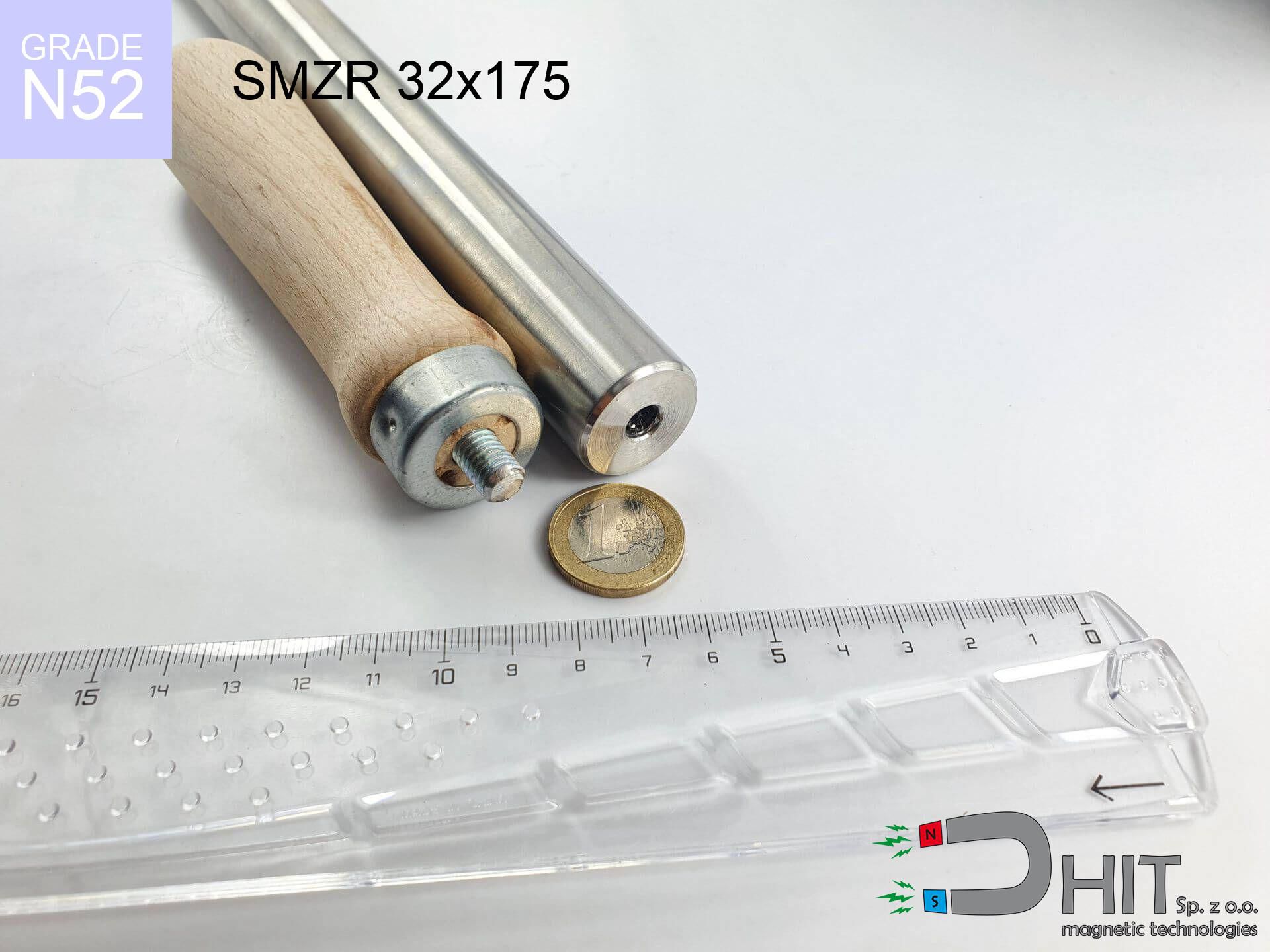SMZR 32x250 / N52 - magnetic roller
magnetic separator with handle
catalog number 140469
GTIN: 5906301813538
diameter Ø
32
mm [±0,1 mm]
height
250
mm [±0,1 mm]
max. temperature
≤ 80
°C
catalog number 140469
GTIN: 5906301813538
diameter Ø
32 mm [±0,1 mm]
height
250 mm [±0,1 mm]
max. temperature
≤ 80 °C
738.00 ZŁ gross price (including VAT) / pcs +
600.00 ZŁ net price + 23% VAT / pcs
bulk discounts:
need more quantity?Don't know what to choose?
Give us a call tel: +48 888 99 98 98 or get in touch via contact form on our website. You can check the lifting capacity as well as the shape of neodymium magnets in our force calculator force calculator
Orders placed by 2:00 PM will be shipped on the same business day.
Specification: magnetic separator with handle 32x250 / N52
Magnetic properties of the material N52
Physical properties of sintered neodymium magnets Nd2Fe14B
Find suggested articles
Advantages and disadvantages of neodymium magnets NdFeB.
Apart from immense power, neodymium magnets have the following advantages:
- They do not lose their strength (of the magnet). After approximately 10 years, their power decreases by only ~1% (theoretically),
- They are highly resistant to demagnetization by external magnetic sources,
- By applying a shiny coating of nickel, gold, or silver, the element gains an aesthetic appearance,
- They have very high magnetic induction on the surface of the magnet,
- Thanks to their high temperature resistance, they can operate (depending on the form) even at temperatures up to 230°C and above...
- Due to the option of accurate forming or adaptation to individual needs – neodymium magnets can be produced in various forms and dimensions, which enhances their versatility in applications.
- Wide application in the industry of new technologies – are utilized in HDD drives, electric motors, medical equipment and very modern machines.
Disadvantages of neodymium magnets:
- They are prone to breaking as they are extremely fragile when subjected to a powerful impact. If the magnets are exposed to impacts, we recommend using magnets in a steel housing. The steel housing in the form of a holder protects the magnet from impacts and also increases its overall strength,
- Magnets lose their strength due to exposure to high temperatures. In most cases, when the temperature exceeds 80°C, these magnets experience permanent loss in strength (although it is worth noting that this is dependent on the form and size of the magnet). To avoid this problem, we offer special magnets marked with the [AH] symbol, which exhibit high temperature resistance. They can operate even at temperatures as high as 230°C or more,
- Magnets exposed to a humid environment can corrode. Therefore, when using them outdoors, we recommend using waterproof magnets made of rubber, plastic, or other moisture-resistant materials,
- The use of a cover - a magnetic holder is recommended due to the limited production capabilities of creating threads or complex shapes in the magnet
- Possible danger associated with microscopic parts of magnets can be dangerous, when accidentally ingested, which is particularly important in the context of child safety. Additionally, tiny parts of these devices have the potential to complicate diagnosis in case of swallowing.
Handle Neodymium Magnets Carefully
Neodymium magnetic are particularly delicate, which leads to shattering.
Magnets made of neodymium are highly delicate, and by joining them in an uncontrolled manner, they will break. Magnets made of neodymium are made of metal and coated with a shiny nickel, but they are not as durable as steel. In the event of a collision between two magnets, there may be a scattering of fragments in different directions. Protecting your eyes is crucial in such a situation.
Magnets are not toys, children should not play with them.
Remember that neodymium magnets are not toys. Do not allow children to play with them. In the case of swallowing multiple magnets simultaneously, they can attract to each other through the intestinal walls. In the worst case scenario, this can lead to death.
Avoid bringing neodymium magnets close to a phone or GPS.
Magnetic fields can interfere with compasses and magnetometers used in aviation and maritime navigation, as well as internal compasses of smartphones and GPS devices. There are neodymium magnets in every smartphone, for example, in the microphone and speakers.
The magnet coating contains nickel, so be cautious if you have a nickel allergy.
Studies clearly indicate a small percentage of people who suffer from metal allergies such as nickel. An allergic reaction often manifests as skin redness and rash. If you have a nickel allergy, you can try wearing gloves or simply avoid direct contact with nickel-plated neodymium magnets.
Dust and powder from neodymium magnets are flammable.
Avoid drilling or mechanical processing of neodymium magnets. If the magnet is crushed into fine powder or dust, it becomes highly flammable.
Keep neodymium magnets away from TV, wallet, and computer HDD.
Magnetic fields generated by neodymium magnets can damage magnetic storage media such as floppy disks, credit cards, magnetic ID cards, cassette tapes, video tapes, or other similar devices. They can also damage televisions, VCRs, computer monitors, and CRT displays. Avoid placing neodymium magnets in close proximity to electronic devices.
Keep neodymium magnets away from people with pacemakers.
In the case of neodymium magnets, there is a strong magnetic field. As a result, it interferes with the operation of a heart pacemaker. Even if the magnetic field does not affect the device, it can damage its components or deactivate the entire device.
Neodymium magnets can attract to each other due to their immense internal force, causing the skin and other body parts to get pinched and resulting in significant swellings.
If you have a finger between or alternatively on the path of attracting magnets, there may be a serious cut or a fracture.
Neodymium magnets can become demagnetized at high temperatures.
In certain circumstances, Neodymium magnets can lose their magnetism when subjected to high temperatures.
Neodymium magnets are over 10 times stronger than ferrite magnets (the ones in speakers), and their power can shock you.
Read the information on our website on how to properly utilize neodymium magnets and avoid significant harm to your body and unintentional damage to the magnets.
To raise awareness of why neodymium magnets are so dangerous, read the article titled How dangerous are very strong neodymium magnets?.







